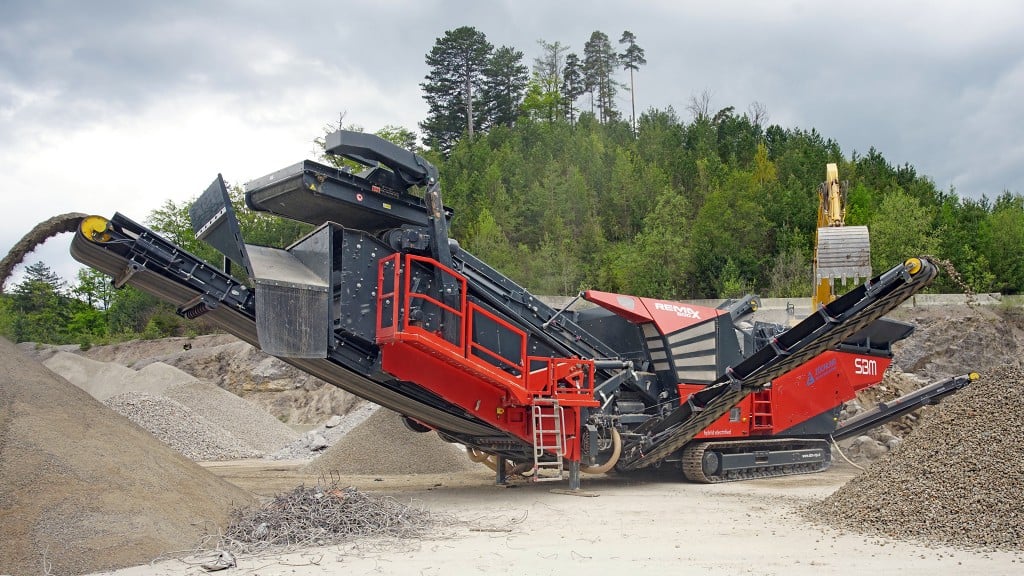The role of C&D biomass in waste diversion
Zero waste movement should rethink their stance on C&D biomass for waste-to-energy

Zero waste programs are being implemented or considered for implementation across North America. These optional programs have the laudable goal of reducing or even eliminating the amount of waste going to landfills. But part of these programs’ requirements is that, besides no material going to landfill, nothing is supposed to be incinerated in waste-to-energy facilities. This would include C&D biomass. The C&D recycling industry disagrees with this requirement.
C&D biomass is a fuel that is highly processed to strict specifications, and has been accepted by federal and most state and provincial agencies in North America as a legitimate fuel that offsets the need for fossil fuels. Its use is considered carbon neutral.
Biomass created with C&D wood is a fundamental, necessary market for the economical feasibility of mixed C&D recycling facilities, because the largest single incoming material to these operations is wood. Every potential market needs to be available for wood products in order to make C&D recycling work as a sustainable option for the recovery of not only used construction and demolition industry wood, but for all materials in the stream.
Despite the fact that C&D materials are a high-quality energy source comprised mainly of wood (a fuel used since the dawn of mankind) zero waste principles consider its conversion to biomass as an unacceptable “disposal” option. But without the biomass market for C&D wood, for economic reasons, the other materials in the C&D steam cannot be recycled. The solution is that C&D-to-biomass for use in waste-to-energy should be considered by zero waste programs as an acceptable diversion alternative, and as a necessary component of any comprehensive C&D recycling program.
Fortunately, C&D biomass is recognized as an excellent, high-quality fuel by the U.S. Environmental Protection Agency, the Biomass Power Association and its members, and state and provincial environmental agencies that allow its use across North America where markets are available. It is also recognized as a fuel that helps facilitate green building practices.
Alternatives to converting C&D wood into biomass for fuel, such as recovering wood through deconstruction activities and reconstructing wood through finger-jointing together smaller wood pieces, are simply not feasible because of legitimate cost and structural concerns.
The overwhelming majority of recyclable C&D materials generated at jobsites can be handled in a cost effective, efficient and environmentally friendly manner. Commingled materials are gathered and hauled to specialized facilities that are able to sort and process the waste into useful products.
While wood is the most voluminous material coming into any mixed C&D recycling facility, finding end markets for it is a challenge. While small pockets of added value end markets such as panelboard exist in North America, there are far too few of them, and too many economic factors involved. Besides biomass, the only other major market for C&D wood is mulch, which is seasonal and competes against green wood (land clearing, forestry and yard waste).
Hence, C&D wood can either be used to make biomass for fuel, or it can go to the landfill. Granted, wood fuel is a low-value product, and C&D recyclers would like to sell into added-value products, such as infeed for particleboard. Even mulch can be more profitable, but not all C&D wood is appropriate for conversion to mulch.
What it comes down to is that with a viable market for biomass fuel created from C&D materials, it provides the financial underpinning that allows for the recycling of other, more difficult materials in the C&D stream, such as cardboard, ceiling tiles, vinyl, gypsum drywall, and construction plastics. Without the market for C&D biomass for waste-to-energy, all these materials can potentially go to the landfill.
While some do not understand exactly how C&D recycling works and wish to eliminate the biomass market for C&D materials, they should know that the market is not going away, even where zero waste policies are mandated. The market for biomass in the C&D industry is simply that necessary.
In conclusion, C&D biomass is an extremely important component of any C&D recycling program, and is the engine that often makes the market economically feasible enough to recycle the other materials in the stream. It is accepted as a legitimate, safe and specified fuel created by careful processing of incoming material, unlike many fuels commonly used in waste-to-energy systems.
The use of C&D biomass should not be considered to be recycling, but should be considered by zero waste programs as an acceptable option that will contribute greatly to diversion of waste from landfills.
This article is reprinted from Recycling Product News, Volume 25, Number 1, January/February 2017.
Company info
35 E. Wacker Dr., Suite 850
Chicago, IL Phone: 866.758.4721
Chicago, IL
US, 60601
Website:
cdrecycling.org
Phone number:
866.758.4721



